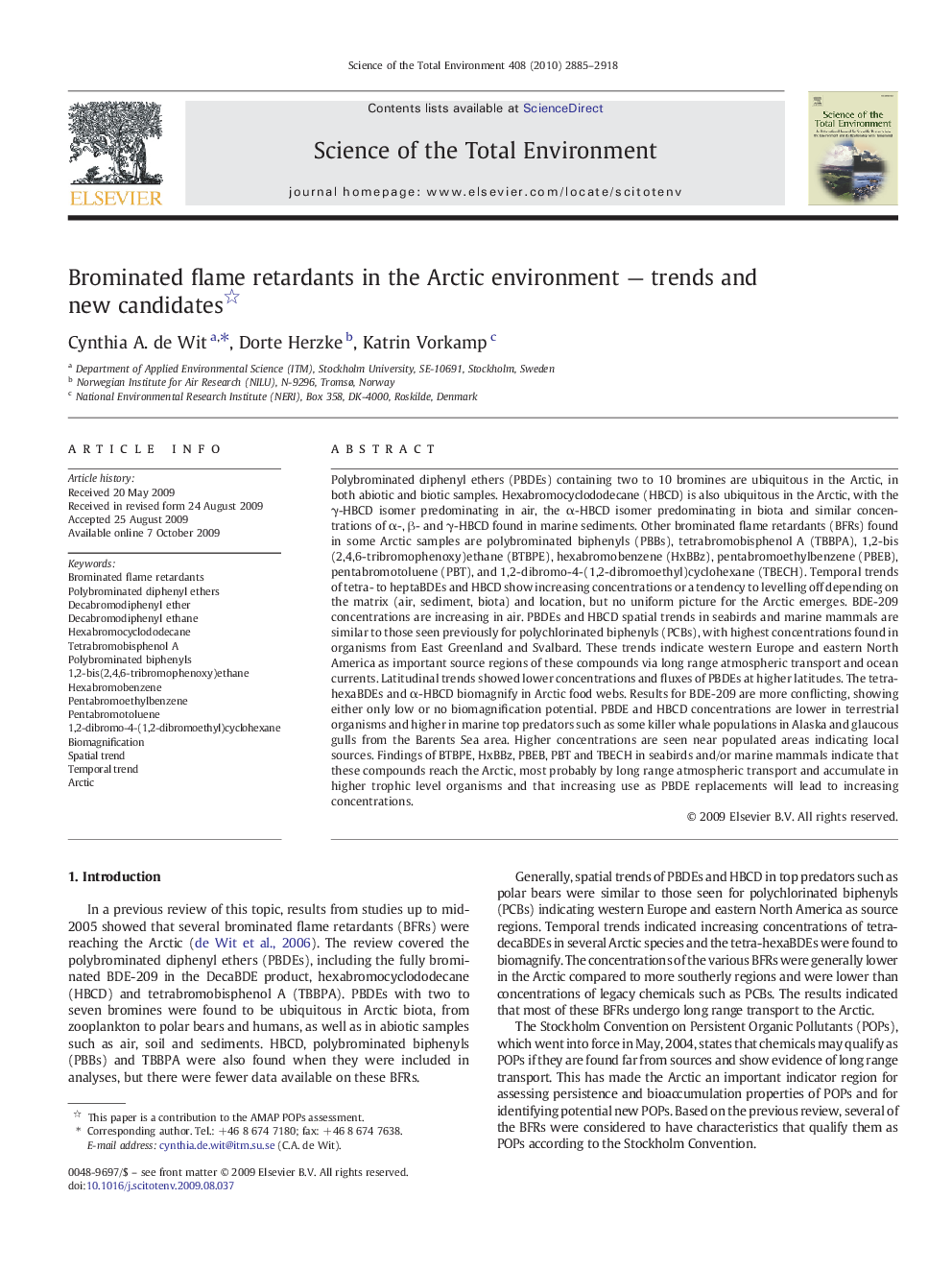| Article ID | Journal | Published Year | Pages | File Type |
|---|---|---|---|---|
| 4430635 | Science of The Total Environment | 2010 | 34 Pages |
Polybrominated diphenyl ethers (PBDEs) containing two to 10 bromines are ubiquitous in the Arctic, in both abiotic and biotic samples. Hexabromocyclododecane (HBCD) is also ubiquitous in the Arctic, with the γ-HBCD isomer predominating in air, the α-HBCD isomer predominating in biota and similar concentrations of α-, β- and γ-HBCD found in marine sediments. Other brominated flame retardants (BFRs) found in some Arctic samples are polybrominated biphenyls (PBBs), tetrabromobisphenol A (TBBPA), 1,2-bis(2,4,6-tribromophenoxy)ethane (BTBPE), hexabromobenzene (HxBBz), pentabromoethylbenzene (PBEB), pentabromotoluene (PBT), and 1,2-dibromo-4-(1,2-dibromoethyl)cyclohexane (TBECH). Temporal trends of tetra- to heptaBDEs and HBCD show increasing concentrations or a tendency to levelling off depending on the matrix (air, sediment, biota) and location, but no uniform picture for the Arctic emerges. BDE-209 concentrations are increasing in air. PBDEs and HBCD spatial trends in seabirds and marine mammals are similar to those seen previously for polychlorinated biphenyls (PCBs), with highest concentrations found in organisms from East Greenland and Svalbard. These trends indicate western Europe and eastern North America as important source regions of these compounds via long range atmospheric transport and ocean currents. Latitudinal trends showed lower concentrations and fluxes of PBDEs at higher latitudes. The tetra-hexaBDEs and α-HBCD biomagnify in Arctic food webs. Results for BDE-209 are more conflicting, showing either only low or no biomagnification potential. PBDE and HBCD concentrations are lower in terrestrial organisms and higher in marine top predators such as some killer whale populations in Alaska and glaucous gulls from the Barents Sea area. Higher concentrations are seen near populated areas indicating local sources. Findings of BTBPE, HxBBz, PBEB, PBT and TBECH in seabirds and/or marine mammals indicate that these compounds reach the Arctic, most probably by long range atmospheric transport and accumulate in higher trophic level organisms and that increasing use as PBDE replacements will lead to increasing concentrations.
